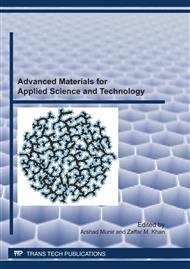p.1
p.11
p.19
p.29
p.37
p.53
p.65
p.73
Development of Parametric Model and Warping Analysis of Composite Beam with Multiple Rigid Regions
Abstract:
Composite materials are used extensively in aircraft structures, automobiles, sporting goods, and many consumer products. Thin-walled multicell beams made of composite materials, have important applications in aerospace structures. The torsion load on these beams is caused due to distance between Centre of Pressure (CP) and Centre of Gravity (CG) of aerospace vehicle in flight. Warping is a result of torsion load and its analysis is important to predict actual behavior of multicell beams. Study of warping displacements is necessary because prevention of warping leads to stress development. Enhancement in design requires design optimization generated by parametric modeling. Problem of cross-sectional distortion can be controlled through use of rigid diaphragms equally spaced along the length of beam. The aim of present study is to establish a procedure for parametric modeling in presence of rigid regions and simulate warping effects caused by torsion on multicell beams. Quasi-isotropic composite material has been used in multicell beams. Four models of multicell beams analyzed have same length and thickness, but different number of rigid regions and corresponding compatible mesh size. Warping is simulated by FEM based computational program ANSYS, and one; ten and seventy rigid regions inside beam were analyzed. Numerical simulations results show that beam with single rigid region has higher axial warping and more uniform rate of change as compared to beams with multiple rigid regions. It was found that first beam model with one rigid region has warping error 41.6%, second and third model each with ten rigid regions (but different edge size) have 2.5% error in warping, fourth model has 70 rigid regions and it has 0% error in warping. Results show that inaccurate interlaminar shear stresses do not affect the warping behavior of multicell beams. Once the parametric model is defined, then it becomes very quick and easy process to perform warping analysis of composite multicell beam with rigid regions.
Info:
Periodical:
Pages:
29-36
Citation:
Online since:
September 2011
Price:
Сopyright:
© 2011 Trans Tech Publications Ltd. All Rights Reserved
Share:
Citation:


